|
The Friends' signal system is an accurate model of prototypical
CTC signal systems. It is designed to ensure the safety of trains
travelling in opposite directions on the same stretch of track.
Current of Traffic
Like prototypical systems, the circuitry maintains a "current of
traffic". This means that at any given moment, there is an
established direction in which trains are authorized to travel.
Having a current of traffic allows multiple trains to be allowed
into a section of track. Trains can be allowed into an already-occupied
section of bidirectional track if they are going with the current of
traffic. In other words, if they are following the other train.
Trains are not allowed to enter the occupied track against the current
of traffic because that would result in a head-on collision.
Track Circuits
The system uses the rails for communication between the signals.
Electrical pulses are sent in the rails to form a coded track
circuit.
The pulses are sent in both directions
once every second.
Fourteen different coded values are possible creating a
digital communications link between signals.
A continuous series of pulses is required before the
system assumes that the track is vacant. The presence of an axle
across the rails interrupts the communication between signals.
This interruption is interpretted as an occupied section of track.
The current of traffic can only be changed to the opposition direction
if the section of track if completely vacant. Changing the current of
traffic requires a negotiation between the two endpoints of a bidirectional
section of track. Naturally, this communication can only occur through
the rails if the entire segment is vacant.
Control Points (CP)
Control Points are locations that are involved in the negotiation
of the current of traffic. These locations have signals
that allow or hold trains to/from a bidirectional section of track.
Examples include queuing track locations such as Farmersville, wyes and stopping
sidings such as Witcombe Wye, and meet tracks such as Coyote.
These locations contain a proprietary circuit board, containing
32 inputs and 32 outputs, and a 8051 family of microprocessor.
The boards operate from a 6v 5Ah lead-acid batery
that is charged by a solar cell. These boards also contain an XBee radio
module operating in the 900MHz range for communication back to
the Central Station computer.
Currently there are three types of
control points implemented.
Intermediate Signals
Intermediate Signals are found between control points.
These signals act as repeaters in the negotiation and communication process
that occurs through the rails between control points.
These signals contain a proprietary circuit board that fits inside the
head of the signal. The board serves to hold the signal's LEDs in
proper alignment against the signal lenses. These boards operate off
of three NiCD AA batteries and are kept charged with a 1/4 watt solar panel.
Photos
Signal heads are built from 3/4" conduit bodies. The
face is cast resin.
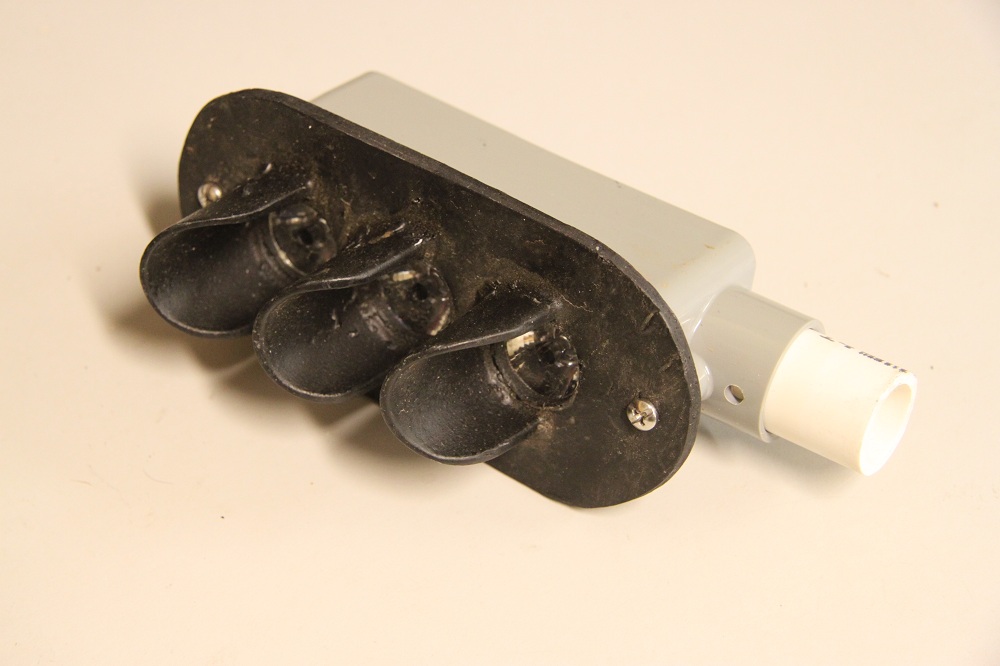
Fraen lenses are glued to the back of the resin face.
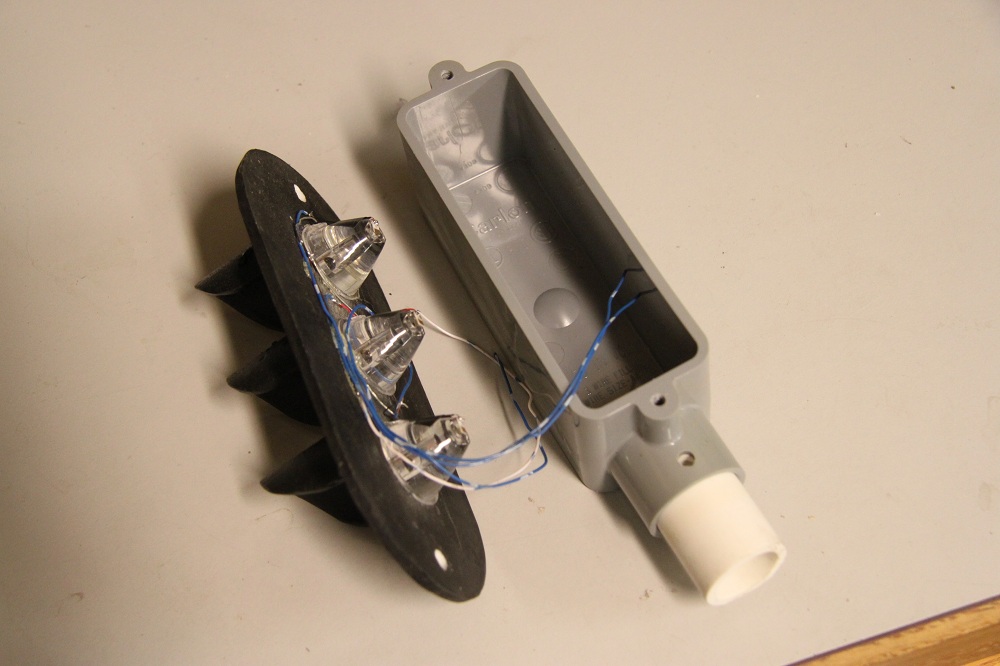
The circuit board contains all the circuitry for the intermediate signals
and fits inside the conduit body.
The board also aligns the Luxeon I LED against the lenses.

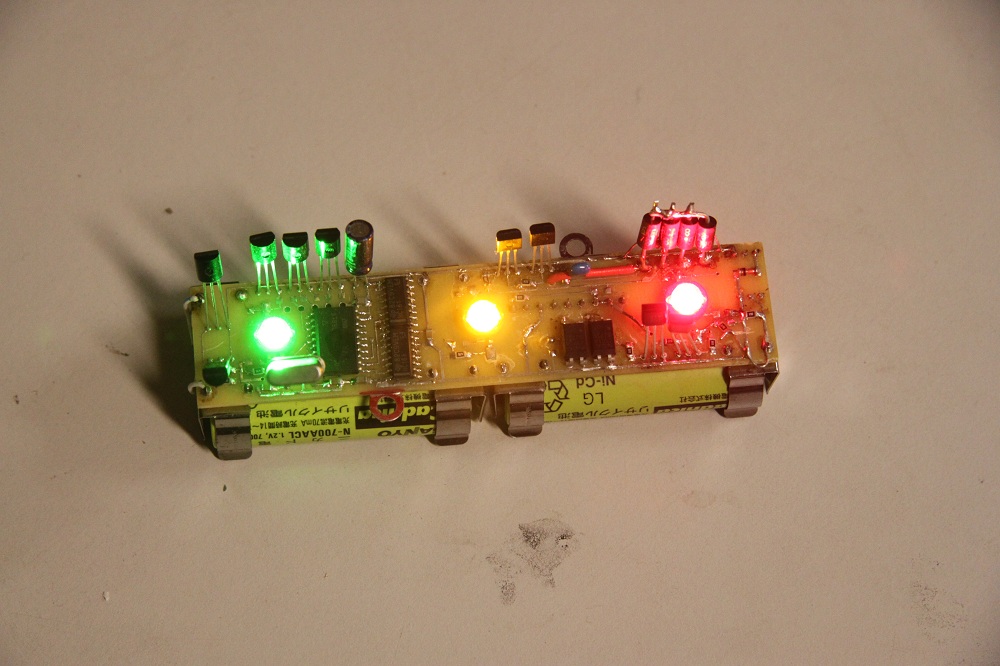
A newer design of board uses Luxeon Rebel LED and Carclo lenses.
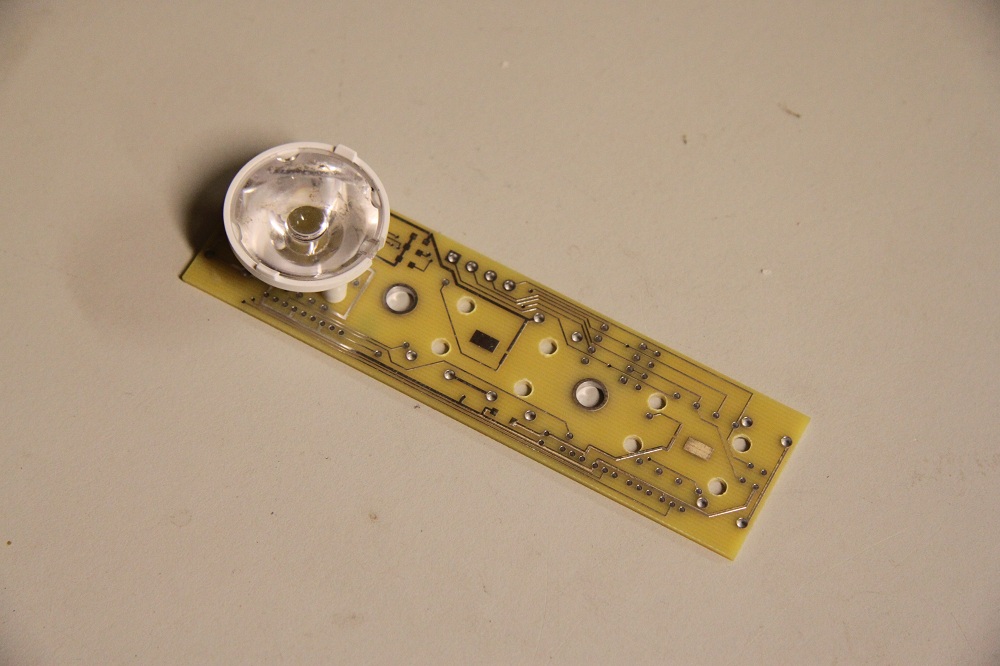
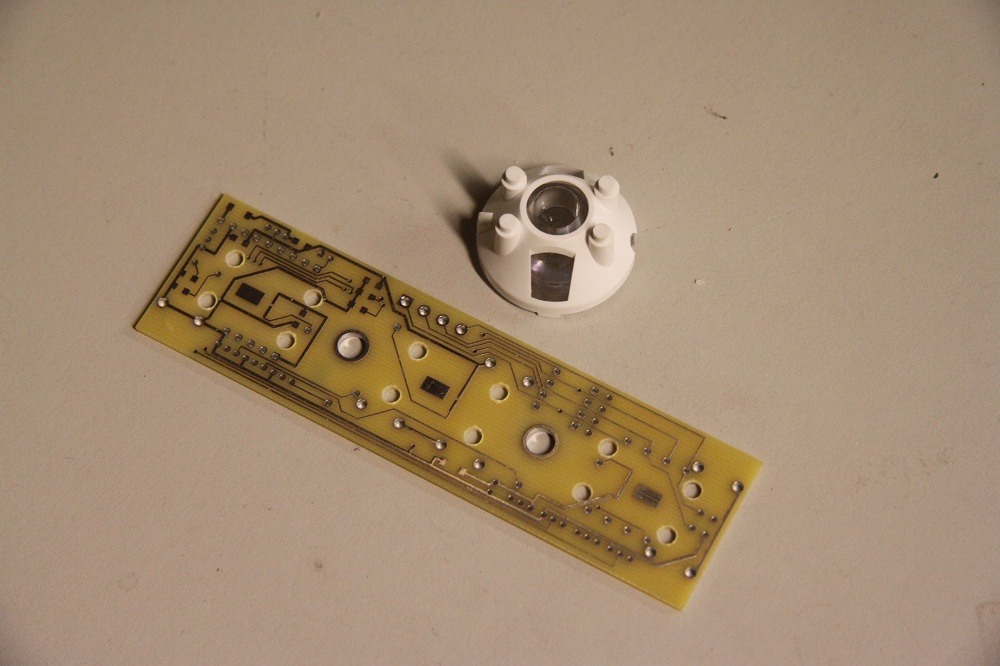
The control circuit at sidings is more sophisticated.
These boards have 32 inputs and 32 outputs. They also contain an XBEE
radio.
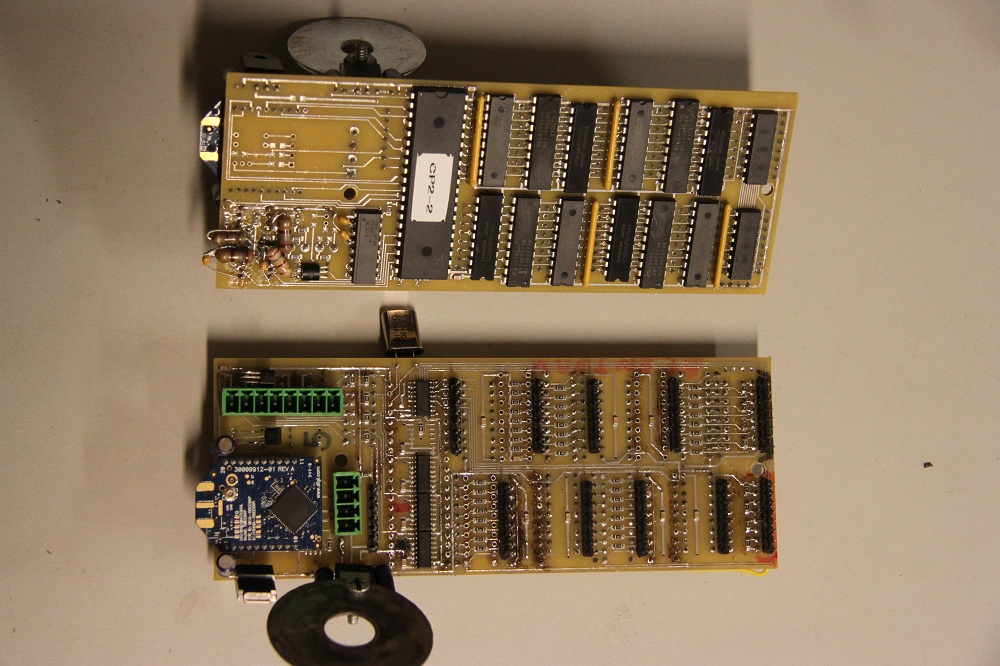
|







